Managing Disc Bulge: Effective Strategies for Pain Relief
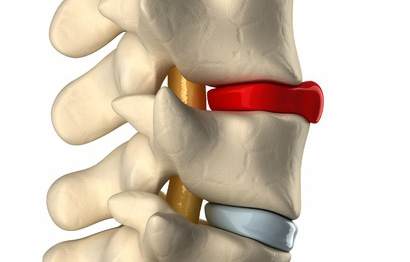
Do you have a disc bulge that is causing you incredible pain in your lower back?
Does your disc bulge give you sciatica or pain down your leg?
Have you wondered what’s going on in your lower back to cause all this pain?
In this issue of Bodi Empowerment, I go over what’s going on with your disc bulge, the cause of your pain and what kind of treatments are best for you. In other words, I act as a guide to help you decide what to do.
Disc herniations, or disc bulges occur when the disc that is found between vertebrae in the spine is damaged. Most of the time the damage occurs in stages.
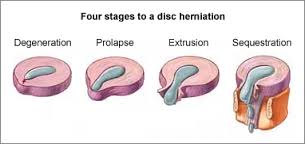
Here are the four stages of a disc herniation or disc bulge:
- Disc Bulge
- Disc Prolapse
- Disc Extrusion
- Disc Sequestration
Think of the disc as a flat hard onion with strawberry jelly inside. The jelly is the nucleus while the onion layers form circular layers of hard cartilage called the annulus.
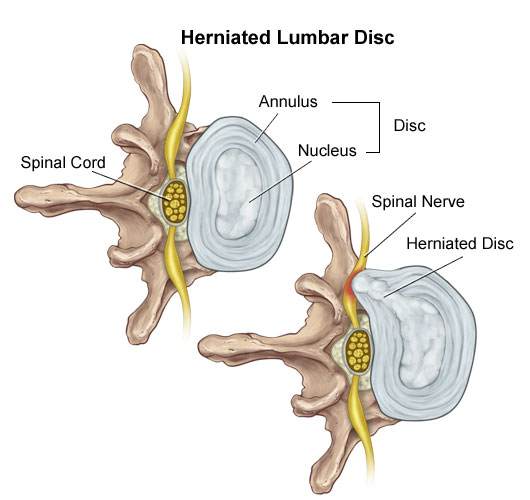
Disc Bulge
If you were to damage the annulus (onion) enough the disc gets to a point that when you bend forward, you pinch the front of the onion so it starts to bulge the onion at the back by pushing the nucleus (jelly) backwards.
This is called a disc bulge. For most of you, there is no pain but for some of you, there can be considerable lower back pain and even sciatica from this small disc bulge.
Disc Protrusion
A disc protrusion is like a disc bulge that comes out even more in one focused spot. The disc pushes out as if you had your finger inside a balloon and pushed out.
Most of the layers of the onion (annulus) have been damaged but the jelly (nucleus) is under considerable pressure. The jelly (nucleus) squeezes through the layers of the annulus (onion) with the few intact layers of the onion (annulus) and the PLL (posterior longitudinal ligament) holding the jelly from spilling out. The disc is still contained by the annulus and PLL ligament. ie the balloon hasn’t popped.
Disc Protrusions usually cause quite a bit of lower back pain and often times sciatica. Many of you, with disc protrusions, on the other hand, have absolutely no pain. There is no clear reason. A study found that 40% of people with no pain whatsoever had disc protrusion confirmed by MRI (Magnetic Resonance Imaging Machine) [1]
The trick is not to let your doctor diagnose you based on just an MRI. An MRI that shows a disc protrusion by itself is not a diagnosis. It’s what a normal person with no pain can have. Make sure there is other evidence!
Disc Extrusion
Disc Extrusion is a disc bulge so large that it breaks through the last layers of the onion (annulus) and the PLL ligament pushing into the area of the spinal cord. ie. The balloon has popped. If you have an extrusion you likely have a tremendous amount of pain leg pain and usually some lower back pain.
Surprisingly when a group of normal people with no pain were scanned with an MRI 18% were found to have disc extrusions (severe disc herniations). [1]
When you have a disc extrusion chances are the extrusion is likely causing your pain as it’s so large.
Disc Sequestration
Disc sequestration occurs when a piece of your jelly (nucleus) that breaks through the onion (annulus) and the PLL ligament has now broken off and moved away further into the spinal cord area. When you have a disc sequestration you have a tremendous amount of leg pain and some lower back pain.
Smaller Is Better: Disc Bulge
Disc Herniations or slipped discs are better if they are smaller, right? You will have less pain right? Yes except when they give you pain. Remember all those normal people with no pain with all kinds of slipped discs? They had disc bulges, disc protrusions, and disc extrusions and even disc sequestrations with no pain.
On the other hand, even with a small disc bulge, you can get a lot of pain and even sciatica with no pressure on the nerve. So smaller isn’t always better.
Bigger Is Better: Disc Bulge
Sometimes bigger is better. Most people like you with disc extrusion and sequestration have lots of pain. The fact is these painful extrusions while more painful usually shrink with time. It takes about a year but with the shrinking of the herniations, the pain does decrease.[2-5]
Disc Herniation: Disc Bulge Treatment
#1 Stop Aggravating Yourself
Half the problem why people don’t get better is that they continually aggravate their lower back and their slipped discs. Learning to lift properly, sit properly and even stand over the sink while brushing your teeth properly can help you avoid the pain.
Even Yoga exercises such as the downward dog can aggravate the lower back, Pilates and even your basic abdominal crunch have been shown by Dr Stuart McGill to increase the pressure in the disc beyond its safe limit.
If you want to find out how to stop aggravating your lower back, click the link below.
See Also: Slipped Discs: Best Self-Treatments To Help Your Lumbar Disc Herniation
#2 Exercise For Disc Herniations / Slipped Discs
For complete instructions on exercises for slipped discs click the link. Best Exercises For Your Slipped Disc
#3 Chiropractic Adjustments For Disc Bulge
A major research paper showed that people who have had lumbar disc herniations who have failed at least 3 months of medical management, including treatment with analgesics, lifestyle modification, physiotherapy, massage therapy, and/or acupuncture, should consider chiropractic spinal manipulative treatment, followed by surgery if unsuccessful. [6]
I would also add that I would try 3 different chiropractors as the competency level varies from person to person. Like any profession including medical doctors and physiotherapists, there are the good ones and bad ones.
See also: 6 Things You Should Look For In A Chiropractic Clinic
#4 Acupuncture For Disc Bulge
Acupuncture is helpful for Slipped Discs in the neck and the lower back.[7-8]
#5 Injections
In a study of two different groups getting treatment for lumbar disc herniations, the group getting chiropractic manipulation had 76.5% of the people improve while the group getting the nerve root injections improved by 62.7%.
After a month, the chiropractic spinal manipulation group had a 60% reduction in pain compared to the nerve root injection group, which had a 53% decrease in pain. Keep in mind the nerve root injection group seemed to be worse to start with compared to the spinal manipulation group.
See Also: Chiropractic Spinal Manipulation Vs. Nerve Root Injections for Lumbar Disc Herniations
Epidural injections are also helpful for lower back pain and the radiating pain down your leg.[8]
#6 Surgery
#1 Discectomy
There are two types of surgery available for slipped discs. Discectomy and spinal fusion. This surgery involves cutting out the piece of the disc that is protruding out and pushing on the spinal cord or nerve.
Discectomy is relatively simple compared to spinal fusion. You have a much better chance of success with discectomy if your MRI shows that your disc herniation is greater than 7 mm thick and correlates well with your neurological exam and nerve conduction studies.[9] If your lower back pain is greater than your leg pain discectomy will not likely work very well for you.[10]
#2 Spinal Fusion
Spinal Fusion removes the disc herniation, jelly (nucleus), and most of the annulus (onion). Bone from the pelvis is then transplanted where your disc was so that the two vertebrae become one.
What Treatment Should You Do?
You should do at least 3 months of therapy when you have a slipped disc before even considering surgery or injections. Start by not aggravating your lumbar disc. You need to modify how you bend forward, lift and even pick up your socks.
See Also: Disc Herniation: Best Self-Treatments To Help Your Lumbar Disc Herniation
If you have trouble sleeping at night you can take painkillers to help you get a better sleep. Don’t stay in bed though. When you have excruciating pain you should only have bed rest for a maximum of two days total.
Next, try chiropractic or physiotherapy with someone who also does acupuncture. Make sure it’s not with somebody who knows how to do 20 acupuncture points. Be patient with them as disc herniations can be difficult to deal with.
Attend regularly 3 times a week for at least a month. Make sure they change the treatments to find what works best for you. If they keep doing the same thing each visit but you are improving that is fine, but if you aren’t improving then it’s time to find a new chiropractor.
If you don’t get any better after a month change to a different chiropractor. I recommend trying 3 different chiropractors as different chiropractors have different training.
If you plateaued or haven’t improved at all then it’s time to get a nerve root injection or an epidural injection. Make sure it’s with a person that does this every day. An emergency room doctor or family physician only does this procedure once in a while. It’s better to get someone more experienced.
When conservative care has been completely exhausted then it’s time to consider surgery. Discectomy is more conservative than spinal fusion and recovery is much quicker. You should consider discectomy surgery if you have :
- Foot drop that is getting worse.
- Any other neurological symptoms that is getting worse like your reflexes, sensitivity
- Bowel or Bladder Symptoms (loss of your poo and pee function). : This is an emergency you should go to the hospital right away.
- If you have a disc protrusion or that is 8 mm or larger that correlates well with a neurological exam, and Nerve conduction tests.
- Leg pain is worse than your lower back pain.
Beware of the surgeon who wants to operate on a small disc bulge. There are too many unnecessary surgeries in the USA especially spinal fusion.
Spinal fusion is considered when your lower back pain is worse than your leg pain
Tell us what you think in the comments below and like us on Facebook. This Toronto Downtown Chiropractor will answer all questions in the comments section.
Research
1. Weishaupt D et al. “MRI of the lumbar spine: Prevalence of intervertebral disc extrusion and sequestration, nerve root compression and plate abnormalities, and osteoarthritis of the fact joints in Asymptomatic Volunteers.” Radiology – 1998; 209:661-666
2. Maigne JY, Rime B, Delignet B. Computed tomographic follow-up of 48 cases of nonoperatively treated lumbar intervertebral disc herniation. Spine 1992; 17:1071-1074.
3. Ikeda T, et al. Pathomechanism of spontaneous regression of the herniated lumbar disc: histologic and immunohistochemical study. J Spinal Disord 1996;9:136-140.
4. Ahn SH, Ahn MW, Byun WM. Effect of transligamentous extension of lumbar disc herniations and their regression in the clinical outcome of sciatica. Spine 2000; 25:475-480.
5. Komori H, Shinomiya K, Nakai O, et al. The natural history of herniated nucleus pulposus with radiculopathy. Spine 1996; 21:225-229.
Research
6. McMorland G et al.Manipulation or microdiskectomy for sciatica? A prospective randomized clinical study. Journal of Manipulative & Physiological Therapeutics 2010; 33: 576-584.
7. Wu, Yao-chi, Jun-feng Zhang, Yi-jun Sun, Cheng-fei Huang, Ping Shao, and Gui-zhen Liu. “Clinical study on electroacupuncture for cervical intervertebral disc herniation.” Journal of Acupuncture and Tuina Science 11, no. 6 (2013): 371-374. – See more at: http://www.healthcmi.com/Acupuncture-Continuing-Education-News/1249-acupuncture-found-superior-to-drug-for-neck-disc-pain#sthash.vD0pNepM.dpuf
8. Wang HeshanNon-Surgical Therapy For Prolapse of Lumbar Intervertebral Disc. The Journal of Traditional Chinese Medicine
9. Parr AT, Diwan S, Abdi S. Lumbar interlaminar epidural injections in managing chronic low back pain and lower extremity pain: a systematic review. Pain Physician 2009;12:163-188.
Research
10. Carragee EJ, et al “Clinical outcomes after lumbar discectomy for sciatica: The effects of fragment types and annular competence” J Bone Joint Surg Am – 2003; 85(1):102-108
11. McMorland G et al.Manipulation or microdiskectomy for sciatica? A prospective randomized clinical study. Journal of Manipulative & Physiological Therapeutics 2010; 33: 576-584.


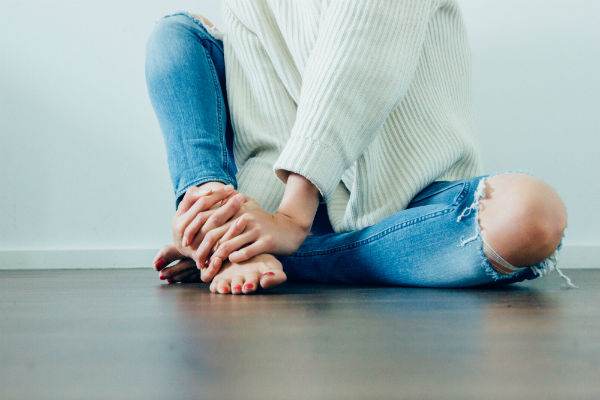
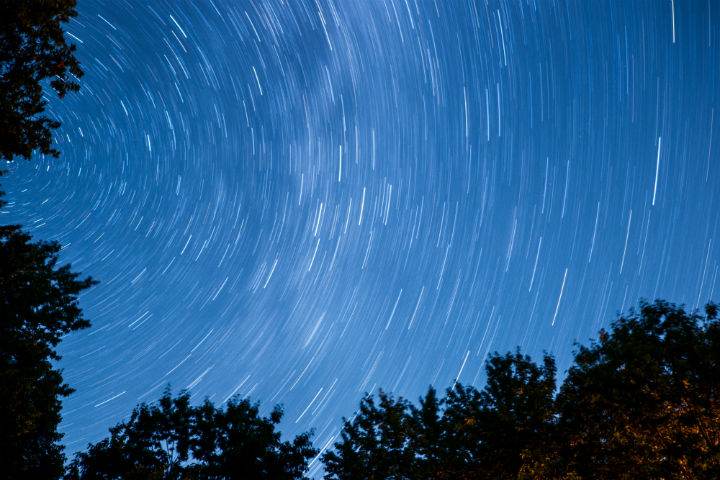
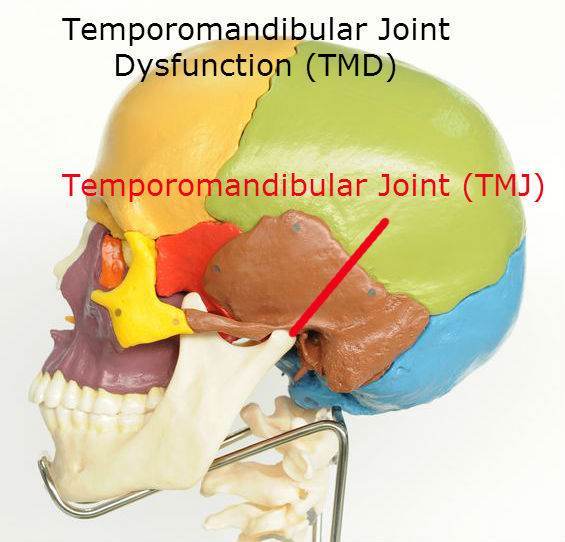
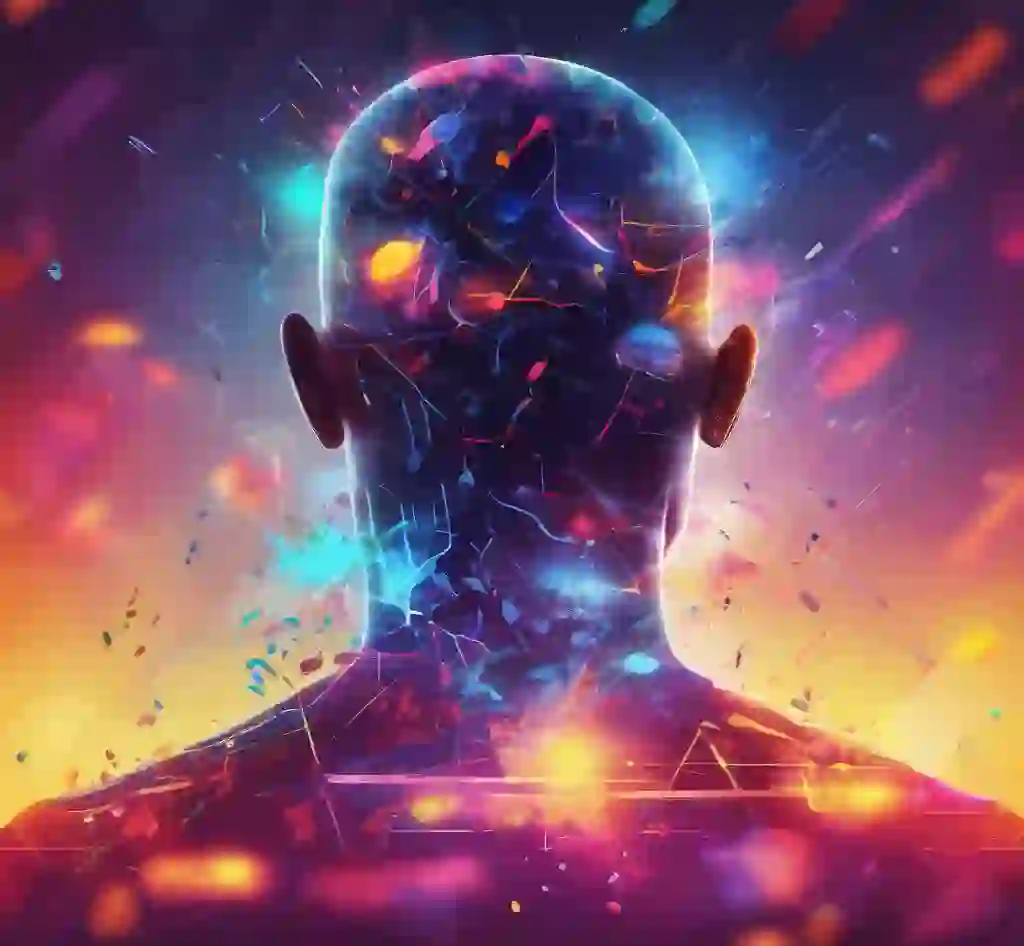
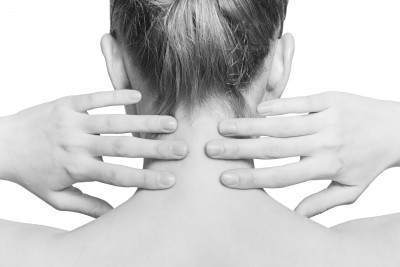
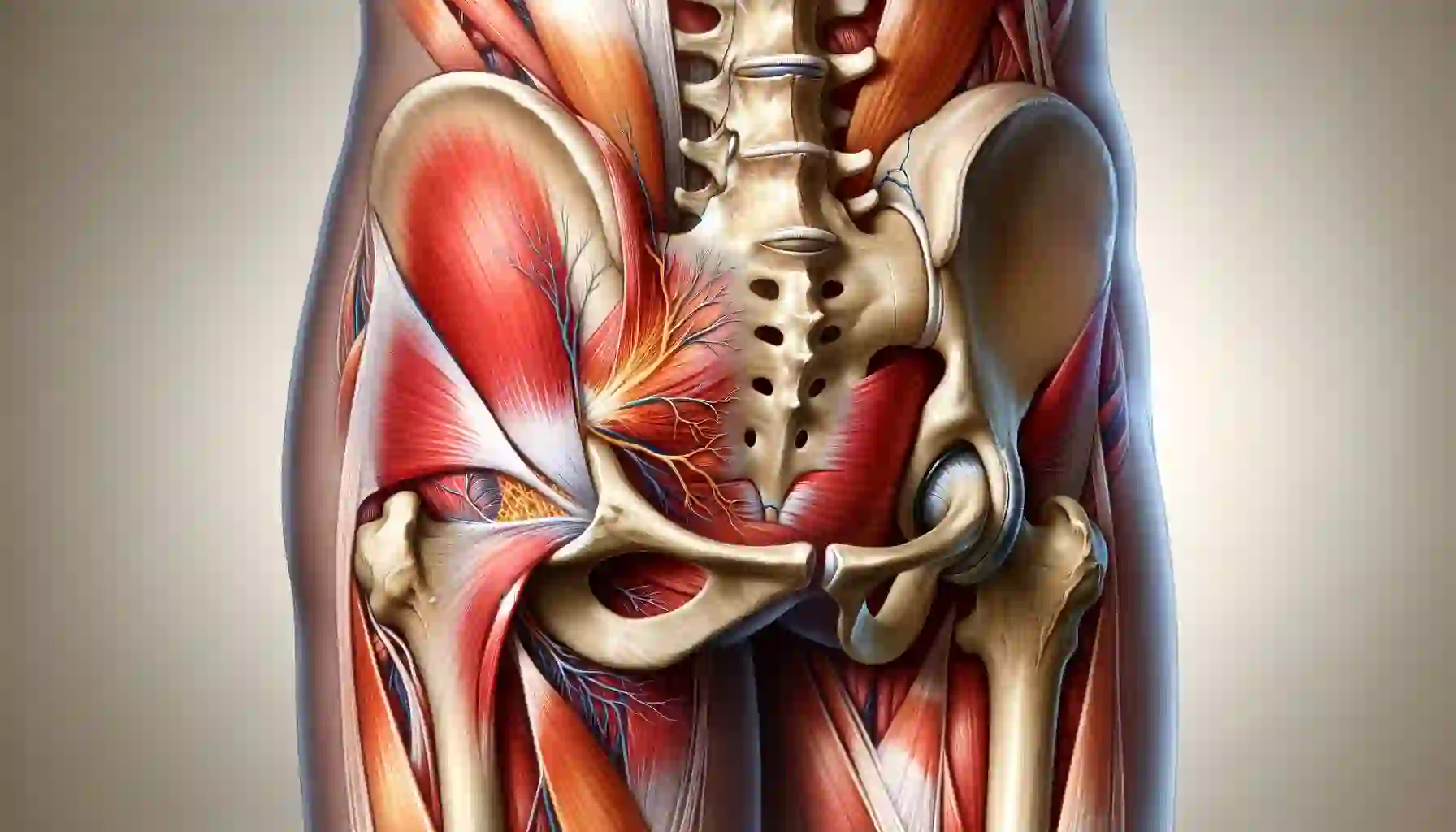
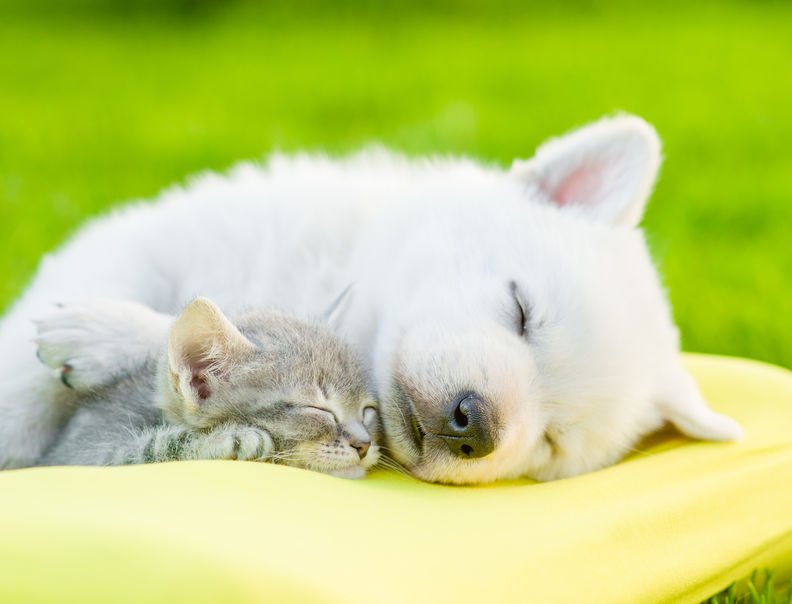
Dear Dr.,
My son is 18 years old an he started to get pain on the thigh after a sprain during playing football. On the advise of an orthopedic, an MRI was done and below are the result of the MRI report:
MRI OF LUMBOSACRAL SPINE SHOWS
1. Relatively narrow canal at L2 ATO L4 LEEL
2. Diffuse bulge with small posterior central protrusin of L4-L5 disc indenting the CAL SAC
3. Mild bulge of LS-S1 disc touching left s1 root.
sir, I would like to know how serious is this condition and can he involve in sport activities/ drills/ swimming etc with the above condition, as he is only 18 years old.
Await for your reply.
Thank you
Author
Thanks for your question Ram. It’s not clear if the injury is actually of the lower back or thigh.
Good luck with your son’s possible slipped disc or thigh strain.
Hello sir,
I am 57yr/male from Delhi, India. I slipped on the stairs about 2 years ago, since then I have been facing problems with my back. About 6 months ago, I started doing swimming and some exercises, but I ended up having pain in my foot soles (mainly right). I visited many doctors, and my pain is gone till some extent. But I still have a feeling of numbness in my foot soles. Whenever I bend down a little, I have slight pain and a tingling feel on the left side of my back, which eventually goes away itself. I always feel uneasiness in my lower back area, which is very uncomfortable.
CLINICAL HISTORY: LBA radiating to right lower limb.
IMAGING FINDINGS: Lumbar lordosis is maintained.
—————————————————————————————————————————–
My MRI Report is as follows:
SPONDYLOTIC CHANGES ARE SEEN IN THE FORM OF MARGINAL OSTEOPHYTES AND VARIABLE DISC DESICCATION AT MULTIPLE LEVELS.
WELL CORTICATED SMALL BONY FRAGMENTS ARE NOTED AT ANTEROSUPERIOR END PLATES OF THE L4 AND L5 VERTEBRAL BODIES – ? BROKEN OSTEPHYTES
Vertebral bodies are otherwise normal in height, alignment, and marrow signal intensity. Posterior spinal elements are normal. END PLATE TYPE II MODIC CHANGES (FATTY) ARE NOTED IN THE SUPERIOR END PLATE OF L3, L4 AND L5 VERTEBRAL BODIES.
AT L4-L5 AND L5-S1 VERTEBRAL LEVELS, THE DISCS SHOW ANNULAR BULGES INDENTING THE ANTERIOR THECAL SAC WITH MILD EFFACEMENT OF THE LATERAL RECESSES BILATERALLY. AT L5-S1 VERTEBRAL LEVEL, THE DISC SHOWS POSTEROCENTRAL ANNULAR TEAR WITH MILD IMPINGEMENT OF THE EXITING L5 NERVE ROOT AT EXTRA-FORAMINAL LOCATION BILATERALLY. NO EXITING NERVE ROOT IMPINGEMENT NOTED AT L4-L5 VERTEBRAL LEVEL.
No significant disc herniation / neural compression seen at other levels.
Bony canal is capacious at all levels with no obvious canal stenosis.
Distal cord and conus medullaris region appear normal in MR morphology.
MULTILEVEL POSTERIOR FACET JOINT ARTHROPATHY NOTED.
Pre and paravertebral soft tissues are normal.
IMPRESSION: MR IMAGING OF LUMBOSACRAL SPINE REVEALS MULTILEVEL SPONDYLODISCAL CHANGES WITH IMPINGEMENT OF THE EXITING L5 NERVE ROOT BILATERALLY AT EXTRA-FORAMINAL LOCATION.
————————————————————————————————————————————
My question to you is, that can my problem be treated by medicine? Or operation is my only option?
Please guide me with the options I have to improve my condition.
Author
Thanks for your question Manoj. I haven’t seen the MRI but it’s a little unusual to see small bony fragments at the end plates. Could be the start of a Smorl’s node which is usually asymptomatic. However type II modic changes are related to more severe lower back pain. This is only a relationship. Some people have no pain when they have these changes. Also the annular tear is also related to pain.
You can try these exercises to help you. However if you get worse or the pain goes further down the leg then you are getting worse so you should stop. This is an opinion and not a recommendation.
https://www.bodiempowerment.com/herniated-disc-part-2-the-best-exercises-for-your-herniated-disc/
Hope that helps your disc herniation.
I’mpression
Mild disc desiccation and posterior left paracentral disc protrusion at l4 5 severely compressing the spinal canal and both the neural foraminae with compression of the traversing and exiting nerve root on the lift . mild compressing on the right traversing nerve root and cauda equine noted.
loss of lumber lordosis suggestive of paraspinal muscle spasm.. mild dice desiccation and posterior disc protrusion at l3-4 level mildly compressing the spinal canal and the traversing nerve root on the lift . disc desiccation and mild posterior disc protrusion at l5 s1 . no spinal stenosis . no obvious nerve root compressing. please help to undersatand .
I have pain in the back when stand and walking going to my leg on the lift side. I have this pain from last September 26 2016.
Author
Thanks for your comment Muhammad. You need to tell me a lot more about your symptoms. The MRI is a little useful but that’s not how you diagnose a lower back problem. It’s used as a confirmation. The history and examination is of paramount importance. Tell me as much detail about your symptoms and I will give you an opinion.
Author
Thanks for your question. I look at MRI’s and the reports all the time but I cannot understand your situation unless you give the symptoms.
Hi dr Ken.
I’ve had low back pain for 4 years now is in my neck.
Spondylitis and scoliosis plus modic type 1degenerative endplate degenerative disc at L4/L5 and more markedly at L5/S1.
I’m in a lot of pain day and night I have disc herniations at these levels.
I have had all the pain management that’s available out there plus I took it upon myself to see a chiropractor who made my back worse plus acupuncture witch didn’t help one bit..so now I’m going to have the steroid injections what’s the chances of this helping me?
I’m at the end of my rope with this pan.
Kind regards.
Tracey
Author
Thanks for your question Tracey. It really depends on who you see. I would first try the best chiropractor or physiotherapist in your area. If that doesn’t work you typically do an epidural steroid injection which is what you are likely referring to. If you are still in pain or the pain comes back within a couple of weeks then you should go back to the chiropractor as now the treatment can help.
Hope that helps your disc herniation.
Hi dr Ken…I have now had bilateral injections done on my spine…in a lot of pain still…plus just before I had the procedure done I pulled something in my right side really close to where the herniations are…I’m not having much luck with my back…my blood pressure was low and still is..plus I’m shaking constantly…as for seeing another chiropractic doctor that’s a no as my pain team strongly recommend against that…I don’t trust anyone to touch my back after what the last chiropractor did…I e had a lot done…even went to have cupping done none of them worked…if these injections don’t work then it could be surgery for me.
Anyway thanks for getting back to me
Kind regards.
Tracey.
Author
Thanks for your comment Tracey. If you are not going back to the chiropractor you should try going to a physiotherapist. Exercises often work 3-5 days after an epidural steroid injection. Also, it’s not the profession. As I’ve said before it’s the person that’s more important not the profession. Chiropractor or physiotherapist.
Good luck with your slipped disc.
Hi Doctor
Hope u r fine..
I am 34 yr old and facing a severe low back pain which is moving in my leg.
As per Mri there is mild bulge in L4 L5 and L5s1. Muscle spasm and indentation in anterior thecal sac.
Kindly advise which type of treatment should I take and what preventions and exercises should I do.. I can’t move more..
Author
Thanks for your question Shehzad. I cannot recommend exercises as you are in too much pain. Best you see a the best chiropractor or best physiotherapist in your local area.
thanks Dr Nakamura, the report of my cervical MRI indicate asymmetrical circumferential disc protrusion with left foraminal predominance compressing the thecal sac, I have severe pain in my left armstarting from the articulation between shoulder & arm then getting down to arm
Author
Thanks for your comments Abdefattah.
i have problem at L5 S1 LEVEL dehyrated centrally protruded disc casusing mild ventral thecal sac compression
i gone through physiotherapy about three week but pain is sitil there what should i do know my doctor suggest for epidural but i dont want that injection plz sugest me some excersiz thanx
Author
Thanks for your question Gilliani. If you want to avoid an injection try these exercises. https://www.bodiempowerment.com/herniated-disc-part-2-the-best-exercises-for-your-herniated-disc/
However, exercises may make you worse as I don’t know your full history. You know you are getting worse if the pain, numbness or tingling goes further down the leg. Or the symptoms increase. Like more numbness over a greater area. Increased level of pain or more frequently. These exercises should be supervised by a health practitioner initially. This is an opinion not a recommendation.
Hope that helps your disc herniation.
thanx Dr ken i will let you know about my condition with these exercise
Author
You are welcome Gillani.
He Dr. Ken.
I have been suffering from Lower back pain since last 2 Years, have pain in my legs too.
My report says:
Mile straightening of lumbar lordosis – likely due to muscular spasm.
L3/4, L4/L5 & L5/S1 disc shows mild diffuse posteriors disc bulge causing thecal sac indentation, bilateral neural foraminal narrowing with impingement upon bilateral traversing and existing nerves roots. Spinal canal diameter 15MM & 16MM respectively.
Can you suggest the best cure?
Author
Thanks for your question Amit. I cannot help you without you telling me more details about your symptoms. MRI are the least important thing. Also, you ask for a cure. I cannot cure you, but exercises may help you but of course, I cannot tell. All I can do is give you my opinion if you do your part.
Hope that helps your possible disc herniation.
You mention that spinal fusion is performed when back pain is worse than leg pain. From what I have been told it is the other way around. Can you confirm this?
Author
Thanks for your question Rob. Here is my quote “If your lower back pain is greater than your leg pain discectomy will not likely work very well for you.[10]”. I then say “Spinal Fusion removes the disc herniation, jelly (nucleus), and most of the annulus (onion). Bone from pelvis is than transplanted where your disc was so that the two vertebrae become one.”.
You misquoted me.
Hope that helps your slipped disc.
Hi Dr.Ken,
I am 34Yrs/male. While playing got sudden backpain & visited doctor. From the MRI reports he advised me to take complete rest & stop playing except walking & running.
Symtomps:
Lower back pain while get up & sit. I didn’t had pain after taking medicines within 1-2 weeks. But again got severe pain after a month when driving car for continous 3 Hrs.
MRI Report:
-Spinal curvature is maintained.
-vertebral bodies show normal signal internsity.
-height of verterbral bodies are normal.
-endplates show ormal signal intensities.
-disc protrusion seen at L3-4, L4-5 indenting anterior thecal sac and bilateral traversing nerve roots.
-Disc protrustion see at L5-S1 indenting anterior thecal sac
-Disc hydration is lost at lower levels.
-ALL & PLL are normal at all levels.
-Ligamentum flavum is normal.
-Bony spinal dimesntio is normal.
-Lateral recess in normal.
-Pre and paravertebral spaes are normal.
-visualised cord is normal.
-cord is seen to end at L1.
-intervertebral neural foramina are normal.
-visualised facets are normal.
Impression
-disc protrusion seen at L3-4, L4-5 indenting anterior thecal sac and bilateral traversing nerve roots.
-Disc protrustion see at L5-S1 indenting anterior thecal sac
Dessicated lower lumbar discs.
Question:
It happened 2 months back & MRI report is taken recently,
-Is there any chance the issue got aggrevated more in this period because i didnt take proper treatment, causing this damage ?
– I didnt had leg pain or numbness initiall, but recently started feeling that. It that serious ?
-How serious is this problem ? Since I joined new company taking complete rest will not be possbile & how critical is taking the complete rest ? & to what extent rest is required ?
-In your opinion should i got with Surgery & will that resolve the problem completely ? what are the risks involved in it.
Please advise. I’m very disappointed with my health condition now. I have become useless being younger son of my parents. I’m feeling low when they are doing work & I m NOT.
thanks,
Krishna
Author
Thanks for your question Krishna.
1. You can certainly aggravate the problem with driving for 3 hours.
2. Leg pain that wasn’t there means you are getting worse. You should look at taking care of the disc herniation. Seriously is relative. I would call it moderate. One person’s mild is another’s serious though as it’s opinion.
3. Complete bed rest is not recommended in all but the most severe cases. Yours disc herniation while a problem is not the most severe.
Please keep in mind this is an opinion and not a recommendation.
I would do these exercises. https://www.bodiempowerment.com/herniated-disc-part-2-the-best-exercises-for-your-herniated-disc/
Remember you can get worse. If the pain, numbness or tingling is going further down the leg or gets worse in any other way you should stop immediately.
I would see the best chiropractor or physiotherapist in your area if I were you.
Hope that helps your disc herniation.
Dr Ken
My dad is having pain over neck, lower back and sometimes legs. The pain comes frequently and its been year. He consulted a doctor and took MRI scan cervical spine. It says C5/6 posterior ,left posterolateral bulge causing mild cord indentation and left neural formainal narrowing. Also C6/7 right posterolateral disc-osteophyte causing mild right neural foraminal narrowing. .
Doctor had told him to take the injection immediately. He hadn’ tried any other treatment.
Sir ,in this case what should he do?
should he take the injection?
Hope you will reply immediately…
Sir i like to add that my dad is 53 years old. He only tried medications like ointment. Its been only a week since he had consulted the doctor.
Author
Thanks for your question Sai. This is an opinion, not a recommendation since I did not examine your father. Since it isn’t an emergency getting conservative therapy is best. Find the best physiotherapist or chiropractor in your area.
Hope that helps your father’s slipped disc.
Hi sir, its Shahina, 24 years old. I had pain in my right hip area travelling downwards. I did MRI scan and result is like. OBSERVATIONS: Straightening of lumbar Iordotic curvature is noted. Normal alignment of the lumbar vertebrae is seen. Irregularity in adjacent end plates of L1-2 disc. At, L4-L5, L5-S1: Mild posterior disc bulge abuts the thecal sac without neural compression. Ligamentum flavum thickening and facetal arthropathy at L5-S1 level. Straightening of the lumbar spine suggestive of paraspinal muscle spasm. Thecal sac area in sq cms is as follows: L1/2: 2.2, L2/3: 2.2, L3/4: 2.0, L4/5: 2.0, L5-S1:1.9
Author
Thanks for your question Shahina. You don’t give any details of your symptoms so I cannot help your possible slipped disc.
Hello doctor I really don’t know what to do at this point. Ive been to so many doctors and they all have their own opinion and I’m about to lose my insurance after spending so much money. I have L2-L3 L3-L4 L4 -L5 and L5 -S1 bulging disc. L5-s1 says shows diffuse disc bulging. A 3-4 mm central/ right paracentral disc herniation with 4-5mm central inferior subligamentous extension, endplate hypertrophy/ osteophytes ridging,and facet hypertrophy resulting in left neural for am foraminal narrowing without can stenosis. I got that mri 5 months ago and things have gotten worse. Both my feet are completely numb and tingling and burning in both my legs. The pain in my legs are so bad Iman starting to trip. I have shocking pain in my body too. I pee about 25 times a day and also both my hands are numb and tingling. My body is weak all the time and I can’t do anything anymore and due to the heat it just gets worse. I’m 24 and about to lose my insurance and don’t have a lot of people to help me. So can you give me any advice?
Author
Thanks for your question Sean. If you are starting to trip that means you likely have foot drop. In addition to having to pee 25 times per day, do you also have trouble initiating urination? Your case is either urgent or possibly an emergency case. You either need surgery or are a borderline case. This is an opinion, not a recommendation.
Hope that helps your slipped disc.
Dear Dr. Ken
I have a lower back pain from last 6 monts. These are the reports of my MRI. when i bend down i have a feeling of pulling of muscle near the lower back. Is it a problem of disc bulge or muscle pull.
Examination : MRI – Dorsolumbar Spine
Clinical Profile : History of low backache since 5-6 months without any radiation.
Findings:
All dorsolumbar discs exhibit signal changes – s/o partial desiccation.
Minimal diffuse bulges of L4-5 & L5-S1 discs is present, encroaching the neural foraminae and marginally indenting the thecal sac. No significant nerve root displacement. There is no facetal hypertrophy or ligamentum flavum thickening. Canal diameters at these levels are 15 mm & 17 mm respectively.
Remainder of the discs are normal in contour.
There is no focal abnormality in the vertebral bodies.
Paravertebral and paraspinal soft tissues are normal.
Conus and cauda equina roots appear normal.
Both sacroiliac joints are unremarkable.
No frank abnormality in rest of the spine.
Conclusion:
Partial disc desiccation with minimal annular bulges at L4-5 & L5-S1 discs, encroaching the neural foraminae and marginally indenting the thecal sac. No significant nerve root displacement.
Author
Thanks for your question Sujit. I cannot say whether it is a disc bulge or muscle pull or any other thing. The only thing you have really said is you have low back pain with a pulling feeling while bending then your MRI. You need to explain your symptoms in details the MRI is secondary to your symptoms.
Hope that helps you understand that diagnosing a slipped disc or any other problem is not MRI focussed.
Dear Dr. Ken
I have following symptoms
I feel muscle tight in lower back near L5 location after forward bending.
In sitting position pain increases more and walking and sleeping it reduces.
If i press with my thumb in spine at l5 location i feel little pain in that position, other all position there is no pain.
I have taken traction one time and also physiotherapy two times but that didn’t help me.
I have done also blood checking for URIC ACID,Vitamin D.
Percentage are Vitamin D : 28.31 ng/ml
Uric acid : 7.9 mg%
Whether these deficiency will give problem of back pain?
What type of exercise i have to do for the back pain?
Swimming and walking is good for this?
Thanks and Regards
Author
Thanks for your question Sujit. https://www.bodiempowerment.com/herniated-disc-part-2-the-best-exercises-for-your-herniated-disc/
You can try these exercises. However, any exercise can make you worse. You are getting worse if the pain, numbness or tingling goes further down into the buttock or thigh or if the pain, numbness or tingling increases. At that point, you should stop the exercises.
Hope that helps your possible disc herniation.
This is an opinion, not a recommendation.
Thanks Dr. Ken
I will try these exercise.
Regards
Author
You are welcome Sujit.
Hlo sir…
I am 24…I have back problem i.e i feel discomfort in my lower back when a walk or i stand for a some time ….i dont feel any type of pain but i feel tried …. Its happening with me from past 15 days on regular basis….a few days back i was sitting and working i felt a little tiredness or discomfort in my thighs…..After that i went to an Orthopedist …after watching x ray report he said that ur L5-S1 disc height has decreased a little…but when he said plz from now stop lifting heavy weights….this made me sad…sir my question is can i stil do gym? M worried ……after that check up i have checked my x ray report a 100 times…….it means it will also affect my sex life……my heart is still saying that my disc height has not reduced…..plzz plzz plzz plzz sir give me some solution…..(sorry for bad english)
Author
Thanks for your question Rahul. Depending on your age, most people by the age of 40, have some degeneration. Which means that their disc height would be decreased. This is normal. Some people can have this happen in their twenties. Most of the time this is an inherited trait if it happens early. You can still go to the gym from my point of view. You can lift heavy weights, but the problem is how you lift them. Squats, deadlifts and bent over rows are some of the most common exercises that cause problems.
If you want to be safe from another point of view like prevent disc herniations your orthopedic surgeon should have told you that you shouldn’t sit for long periods, bend over repeatedly, or drive too long.
Those are some of the common causes of lower back pain and disc herniations.
Thanx sir for replying me…
Sir today i went to another Dr. he is a renowned specialist….he is that ur L5-S1 disc height is not reduced actually this is by birth…..he did leg stretching test…toe test…also he said to touch your toes by fingers…i didnt experienced any pain….he said may be due to different structure of ur L5-S1 , L4-L5 had taken more load which may causing discomfort while walking, sitting and laying….( i dont have any type of pain i just feel uncomfortable and a have chair after sitting which i feel very comfortable may be it gives perfect support to my back…) And aslo he said whenever u pull some heavy weight stress is taken by muscles, then ligaments and atlast by disc… This is very complex structure we cant say anything so surely….He aslo said take a rest for some time …after that u can do gym….take proper care of back …..
.
.
Sir my question is can my back problem be due muscle strain or ligament sprain
.
.Should i go and take some back massage or should i go to a physiotherapist…
..
.
.The former doctor was saying that sleep sidewise dont sleep straight …but sir when i lay straight i feel comfortable …. In sidewise postion i feel uncomfortable….
.
.from last 7 days m feeling discomfort on regular basis …(may be its becoz m thinking about this more)…and one more thing when i press muscles around my backbone it gives me relief ..
Seriously sir m very much confused what to do ..
Author
Thanks for your question Rahul. Sounds to me that you just need to do knee to chest exercises. But I haven’t examined you. Why don’t you go with the opinion of this specialist. He sounds more reasonable.
Also, you are only feeling discomfort. You are thinking and doing too much about this.
Dear Dr Ken Nakamura. My Name is Paramjit Singh, age 49 years male. I have back pain since 4 years. Sometimes pain is less and sometimes is more. I took several kind of medicines. I observed my pain is increase specially during humidity weather. Here is my Last MRI report. Please advice me.
MR IMAGING OF THE LUMBO-SACRAL SPINE WAS PERFORMED. SEQUENCES: T1W AND T2W SECTIONS IN THE SAGITTAL AND AXIAL PLANES.
THE STUDY REVEALS STRAIGHTENING OF THE LUMBAR LORDOSIS.
The visualized vertebral bodies and their posterior elements show normal height and marrow signal intensity. No antero or posterolisthesis seen.
Generalized spondylotic changes are seen in the form of osteophytes type ii end plate changes, fact joint arthropathy ligament flavum hypertrophy and disc desiccation at multiple levels seen in the form of loss of hyperintense signal on T@W images.
Broad based posterior disc bulges with mild postero-central disc protrusions are seen at L3-4 & L4-5 levels indenting the thecal sac compressing the bilateral descending L4 & L5 nerves.
Minimal posterior disc bulge is seen at L5-S1 level indenting the thecal sac and bilateral descending S1 nerves.
Bony canal stenosis is seen at L4-L5 levels with AP diameter of lumbar canal measures as follos at various levels; L1-13 mm, L2-12 mm, L4-10mm & L5- 10 mm.
Degenerative canal stenosis is seen at L4-5 level (09 mm) contributed by disc changes, boney changes, facet joint arthropathy and ligament flavum hypertrophy.
The dorsal cord, conus medullaris and filum terminal appear normal. No signal alteration is seen.
No pre or paravertebral collection seen.
Author
Thanks for your comment Paramjit. I appreciate you telling us about your MRI. I can’t make recommendations based on an MRI. You need to give lots of details about symptoms.
Hope that helps your disc herniation.
Sir i have back pain from last eight months.pain was so minor 3 days but during exercise when i jumped i felt extrime pain in lower back.now i feel pain while brushing teeth or if i lift weight or if i stand for more than about 10 minuts.
DOCTOR WARN ME THAT I AM GOING TO BE FINISH.MEAN DEATH.
sir doctor told me” you are going to be finished.your finishing.God gifted you good parts but u never care about your parts.
this rey of doctor made me more sick as he warn me of death.im not afraid of death but i really afraid of lying on bed .
sir i want to share final conclusion of MRI report.
here it is.
1.Diffuse disc bulge at Lv3-4 level causing thecal sac identation and narrowing of bilateral neural formina with nerve root compression.
2.Diffuse disc bulge with posterior disc hermination and inferior migration at Lv4-5 and Lv5-Sv1levels causing thecal sac identation and near complete obliteration of biletral neural fermina with nerve root compression.
end.
Adding this that i feel low back pain with low pain in right leg.
Sir i m 32 years old .my weight is 86 kg and hight is 5ft and 8 inches.
Author
Thanks for your question Tariq. I am not sure if you are joking or the doctor incompetent. Assuming that you are joking about death from a disc herniation. I think you need to have the MRI read by another radiologist as it’s not very detailed. Another person that is more detail oriented may be able to shed like on the situation.
Hope that helps your slipped disc.
Sir you said if i am joking or not.Sir i am not joking.Dr. said if i do operation its not sufficient,after some time i should do 2nd then third then fourth operation.He said how many operation i will do?
He further said that i dont need operation and i have only one option and that is cure.
when i asked him what is my problem .then he said i am going to be finished.Sir he didnot actually use word death.but the words he used in our mother tongue mean my problem is too serious and has no solution other than cure.
Sir i am sending you full detail of MRI report.
I hope you will guide me because i am mentally too disturb by the comments of that neuro sergeon.
My own view is that a doctor should incourage his patient,he should not kill patient before death.
MRI full detail is given below.
FINDINGS.
1.Partial Disc dessicatory changes are seen at LV4-5 and LV5-SV1 levels.
2.Schmoral nodes are seen at few levels.
3.Reduced vertebral heights of DV11,DV12,LV4 and LV5.
4.Diffuse disc bulge is seen at LV3-4 level causing thecal sac indentation and narrowing of bilateral neural formina with nerve root compression.
5.Diffuse disc bulge with posterior disc herniation and inferior migration is LV4-5 and LV5-SV1 level causing thecal sac indentation and near complete obliteration of bilateral neural foramina with nerve root compression.
6.Spinal cord appears normal with no evidence of any area of abnormal signal intensity seen in it.
7.Ligamenta flava and the extra-dural fat appear normal in thickness.
8.No para-vertebral mass seen.
9.Pre-vertebral soft tissue appear normal.
10.No pre-vertebral enlarged lymph nodes are seen.
CONCLUSION.
1.Diffuse disc bulge at LV3-4 level causing thecal sac indentation and narrowing of bilateral neural formina with nerve root compression.
2.Diffuse disc bulge with posterior disc herniation and inferior migration at LV4-5 and LV5-SV1 levels causing thecal sac indetation and near complete obliteration of bilateral neural foramina with nerve root compression.
Author
Thanks for your comment Tariq. You need to have your MRI re-read and your get another opinion from a another specialist. It’s doesn’t make it clear that the MRI says complete obliteration of bilateral neural foramina. The report doesn’t tell you what the cause is. I cannot take your word for it as you are not used to reading MRIs.
So have the MRI re-read. I can’t read your report and conclude the cause as it doesn’t say. I will not comment anymore unless you have the MRI re-read.
Hope that helps your disc herniation.
hi doctor ken i am usman parmar , i am male 41 , 71 kg, from india .
my M R I report is
conclusion
1) diffuse posterior buldge of l4 5 disc with posterocentral annular tear intenting thecal sac and encroaching left nueral foramen, mild facetal arthopathy seen at this leval
2) diffuse posterior buldge of l5 s disc with broad based posterocental protrusion indenting thecal sac.
observation : the sagittal diametere measures as follow
l1 : 16.0mm
l2 : 15.0 mm,
l3 : 15.0mm
l4 : 15.0mm
l5 : 15 .0mm
there is no abnormal pre or paraspinal tissue
the consus is normal in signal and morphology
rest of the facet joints are normal , ligamaent flava are not thicknn
screening sequence through sacroliac joints :: reveals no periaticular marrow edema or joint effusion.
so doctor having problem of back pain . my leg is pain so much , from back to thigh and than toe….fulll left leg is paining . like electric curent, i feel so tired in the morning ,,
i do exercise at home …i am taking no medicine like pain killer or else..only doing exercise….
my work is on desktop,,,
so after reading my M R I report canu tell me how worse is my case,,, will imrove by doing exercise…or it more worse later,
will it case of surgery????
plsease suggest me
i reduce my desk top work from last two years…
my leg is paining from last two years , may b case of sciatica.
suggest me best from ur side.
thank u dr ken
usman parmar
india
Author
Thanks for your question Usman. You can do these exercises.
https://www.bodiempowerment.com/herniated-disc-part-2-the-best-exercises-for-your-herniated-disc/
However like any exercise they can make you worse. I would see a chiropractor or physiotherapist so they can customize your exercises for you. I cannot do this for you.
Hope that helps your disc herniation.
Dear Dr. Ken,
I am very excited that I have found your website and I hope you may have some suggestions for me.
I am a 62 year old female who has been suffering with low back pain for the past 3 years. During the past 3 years, I have met with 5 Orthopedic & Neur-surgeons. I have had 3 MRI’s done, steroid injections, two- nerve ablations and several doctors have told me I need Surgery for my L4 & L5 due to deterioration of the discs. Recently, I seen another highly recommended doctor and after looking at a new MRI he
has told me the problem is not in my bones, it is in the my muscles beside
my lower spine. The last 5 discs, the muscles have disappeared beside the spine. Apparently, non of the other doctors looked at the muscles, only the bones. This doctor said my sever pain is because if I don’t have muscles, the spine is not supported and then it collapses and that is why I have my pain. I am not able to stand for more than 20 seconds now, nor am I able to sit for more than 30 minutes. The only position I can get comfortable in is laying down with my feet elevated or in a pool. It is very debilitating, to say the least. The same doctor who has picked up on this muscle problem, gave me lay down exercises in order to try to regain back the muscle, but he has told me if those muscles are not able to come back with exercise, I will have no alternative but to have back surgery and fuse my lower spine.
I have always been an active person, running, walking, pool therapy and have been fit. I have not been able to exercise for the past 1 1/2 years due to this back problem. The muscles in my legs are mostly gone.
Perhaps you could make a suggestion and let me know if surgery is the only hope?
Thank you
Author
Thanks for your question Loretta. From my point of view muscle wasting is actually coming from the nerve being pinched from disc deterioration. So in essence they are all saying the same thing. If the disc didn’t decrease in height substantially the nerve wouldn’t be pinched, if the nerve wasn’t pinched the muscle wouldn’t waste away. There really is no difference. It is remotely possible that you have a soft tissue disease but they are quite rare.
I would get your self the best physiotherapist or the best chiropractor in your area that knows about rehabilitation of the spine. The vast majority of medical doctors are not trained in rehabilitation including orthopedic surgeons, neurologists and neurosurgeons. Some may have taken a few courses but even then, that is not what they do every day. Those that specialize at rehabilitation are going to be better at it, the vast majority of the time.
Hope that helps your lower back pain.
Dear, Dr. Ken
The below report from MRI examination of the lunbo-sacral spine :-
* L 4-5 and L5-SI diffuse discs bulge seen indenting ventral aspect of thecal sac and encroaching upon both exit foramina more at L4-5 level with annular tear at L5-Si level .
Please i need your advice .
Thanks a lot
Author
Thanks for your question Abd El. The most important thing is all the details of your symptoms the MRI is not as important it’s secondary or even tertiary. In other words write lots of details of your symptoms or I can’t help.
Hope that helps your slipped disc.